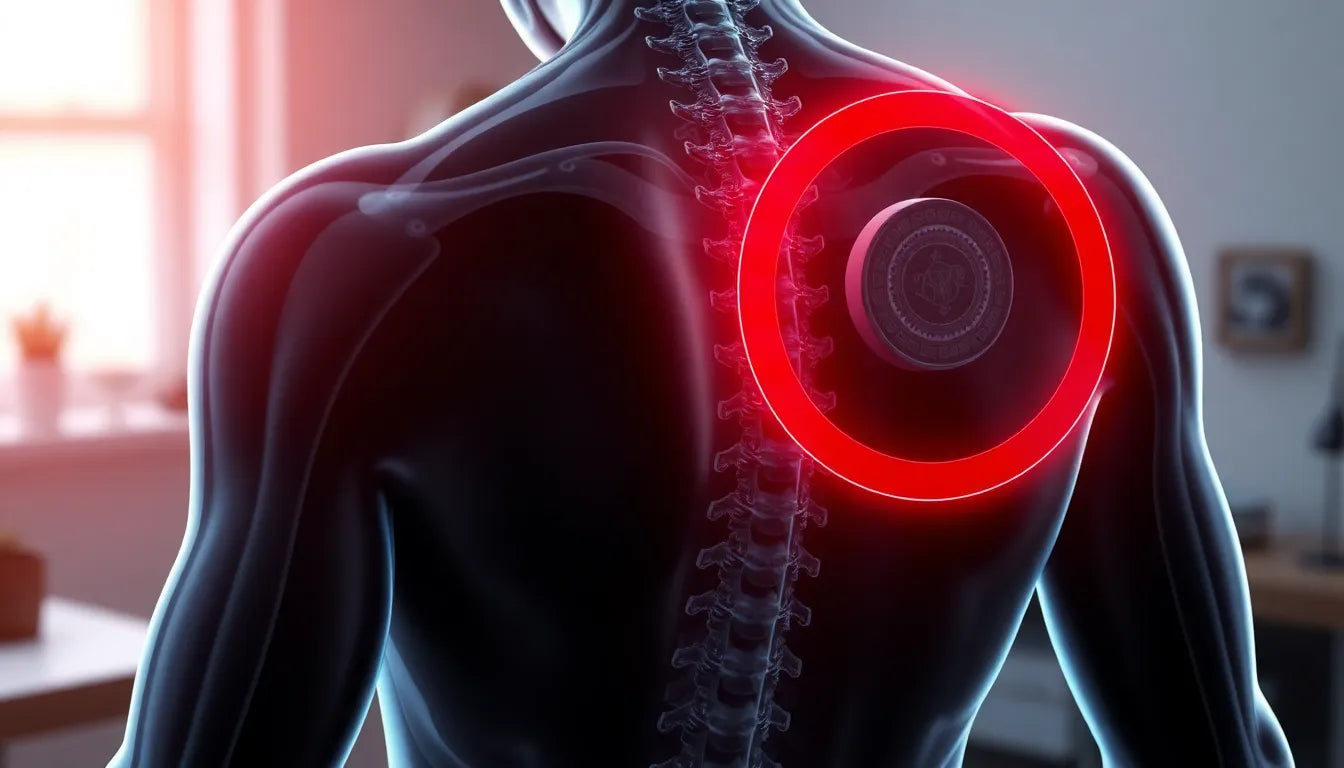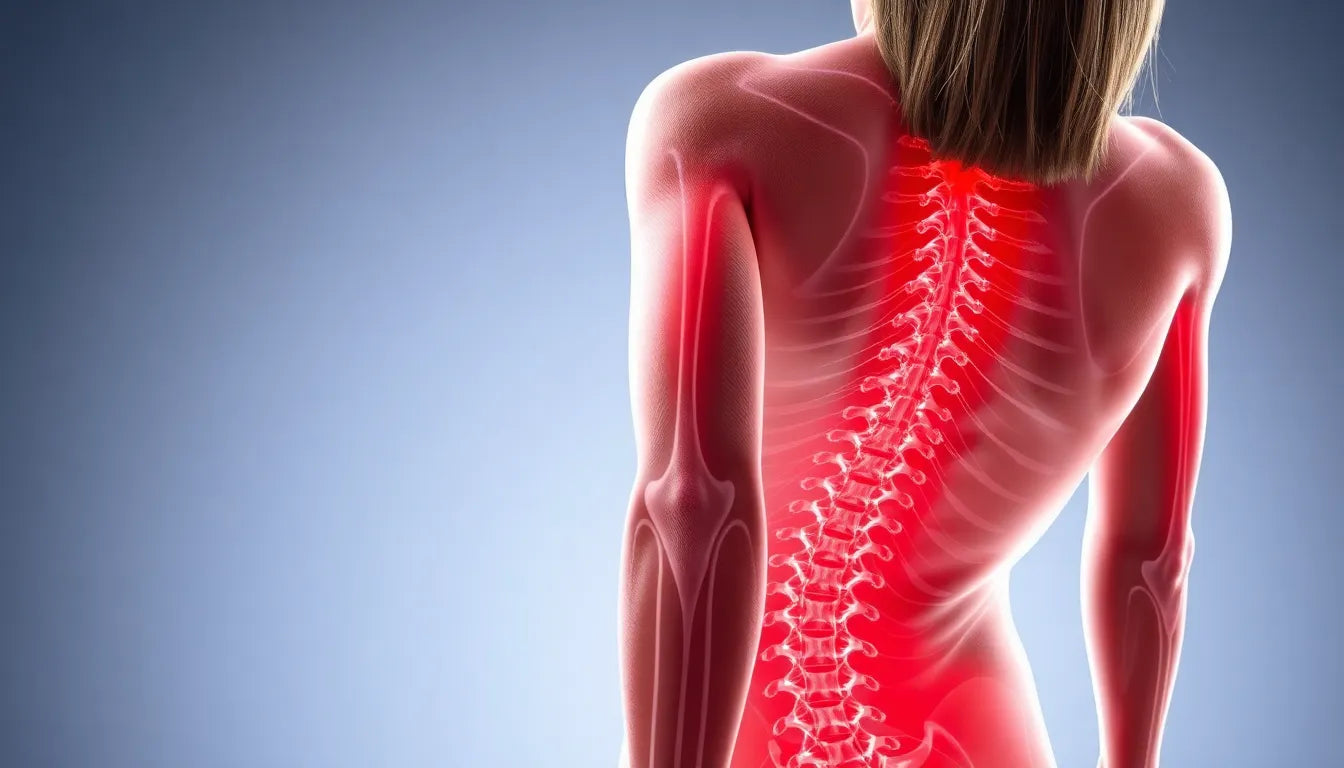Understanding the intricacies of spinal health is crucial, especially when discussing conditions like a herniated disc. A herniated disc occurs when the soft, jelly-like center of a spinal disc pushes through a tear in the tougher exterior casing. This condition is also commonly referred to as a "slipped disc" or "ruptured disc," terms that might sound alarming but help illustrate the nature of the issue. To better grasp what happens during a herniated disc, it's helpful to have a basic understanding of spinal anatomy. The spine is composed of a series of vertebrae, which are cushioned by discs that act as shock absorbers, allowing for flexibility and movement.
The prevalence and impact of herniated discs
Herniated discs are more common than one might think, affecting a significant portion of the population at some point in their lives. Many individuals may have herniated discs without even realizing it, as not all cases present symptoms. However, when symptoms do occur, they can significantly impact daily life, causing discomfort and limiting mobility. The condition can lead to pain, numbness, or weakness in the arms or legs, depending on the disc's location and the nerves affected. This prevalence underscores the importance of understanding how to manage and potentially prevent the condition.
The role of ergonomics in managing herniated disc symptoms
Ergonomics plays a pivotal role in both preventing and managing the symptoms associated with herniated discs. Ergonomics involves designing workspaces and daily environments to fit the user's needs, thereby reducing strain and enhancing comfort. For those dealing with or at risk of herniated discs, ergonomic solutions can be transformative. By optimizing posture and minimizing stress on the spine, ergonomic adjustments can help alleviate symptoms and promote a more comfortable lifestyle. Whether it's through ergonomic chairs, desks, or other supportive tools, these solutions aim to create a healthier environment for the spine, ultimately contributing to better overall spinal health.
Symptoms and causes of herniated discs
Understanding the symptoms and causes of herniated discs is essential for effective management and prevention. Common symptoms include pain, numbness, or weakness in the arms or legs, depending on the location of the affected disc and the nerves involved. These symptoms can vary in intensity and may worsen with certain activities or movements. For some individuals, the pain might be sharp and shooting, while others may experience a dull ache or tingling sensation.
Several risk factors contribute to the likelihood of developing a herniated disc. Age-related degeneration is a primary factor, as the discs naturally lose water content and elasticity over time, making them more susceptible to injury. Other risk factors include obesity, which adds strain to the spine, genetic predisposition, and lifestyle choices such as smoking, which can reduce oxygen flow to the spinal discs, accelerating degeneration. Interestingly, many people with herniated discs remain asymptomatic, highlighting the importance of regular check-ups and proactive health management.
Diagnosis methods for herniated discs
Accurate diagnosis of a herniated disc is crucial for determining the appropriate treatment plan. Healthcare professionals use a combination of diagnostic procedures to confirm the presence and severity of a herniated disc. Imaging tests, such as X-rays, CT scans, and MRIs, are commonly employed to visualize the spine's structure and identify any abnormalities. These tests provide detailed images that help pinpoint the exact location of the herniation and assess its impact on surrounding tissues.
In addition to imaging tests, neurological examinations are often conducted to evaluate nerve function. The straight leg-raising test is a simple yet effective method for detecting nerve root irritation associated with disc herniation. Electromyography (EMG) may also be used to analyze muscle and nerve function, providing further insight into the extent of nerve damage. Together, these diagnostic tools enable healthcare professionals to develop a comprehensive understanding of the condition and tailor treatment to the patient's specific needs.
Treatment options for herniated discs
Treatment for herniated discs typically begins with conservative approaches aimed at relieving symptoms and promoting healing. Rest and activity modification are often recommended to reduce strain on the affected area. Pain management is a key component, with options ranging from over-the-counter pain relievers to prescription medications for more severe cases. These medications help alleviate pain and reduce inflammation, allowing patients to engage in daily activities with greater comfort.
Physical therapy plays a vital role in the recovery process, offering a range of exercises designed to strengthen the muscles supporting the spine, improve flexibility, and reduce pain. Techniques such as traction and stretching are commonly used to alleviate pressure on the affected disc and promote healing. Ergonomic exercises are particularly beneficial, as they focus on optimizing posture and minimizing spinal stress during everyday activities.
In severe cases where conservative treatments fail to provide relief, surgical interventions such as a discectomy may be necessary. This procedure involves removing the portion of the disc that is pressing on the nerve, providing immediate pain relief and restoring function. Recovery timelines vary depending on the severity of the herniation and the treatment approach, but most individuals experience significant improvement within 4-6 weeks with proper care and adherence to prescribed therapies.
Ergonomic solutions for prevention and recovery
Integrating ergonomic solutions into daily life can significantly aid in both the prevention and recovery of herniated discs. By making thoughtful adjustments to your environment, you can minimize spinal stress and enhance comfort.
Preventative ergonomics
Setting up an ergonomic workspace is crucial for minimizing stress on the spine. Start by ensuring that your chair and desk are at the correct height so that your feet rest flat on the floor and your knees are at a 90-degree angle. An ergonomic chair with lumbar support can help maintain the natural curve of your spine, reducing the risk of disc herniation. Additionally, positioning your computer monitor at eye level can prevent neck strain, which often contributes to spinal issues.
Workplace-specific ergonomics
Different work environments require tailored ergonomic solutions. For office workers, investing in a sit-stand desk can promote movement and reduce prolonged sitting, which is a known risk factor for herniated discs. For those in manual labor, using ergonomic tools and practicing proper lifting techniques are essential. Tools with padded handles can reduce strain on the back, and lifting with your legs rather than your back can prevent injury.
Daily living adaptations
Beyond the workplace, ergonomic adaptations in daily activities can prevent further disc damage. Simple changes, such as using a supportive mattress and pillow, can promote spinal alignment during sleep. In the kitchen, placing frequently used items at waist level can reduce bending and reaching, which can exacerbate back problems. Ergonomic products like specially designed kitchen mats can also provide cushioning and support during prolonged standing.
Conclusion
Incorporating ergonomic solutions into your daily routine is a proactive approach to managing and preventing herniated discs. By making thoughtful adjustments to your workspace and home environment, you can reduce spinal strain and enhance your overall comfort. These lifestyle changes, combined with ergonomic aids, form a comprehensive strategy for maintaining spinal health and preventing recurrence. Consider these adjustments as part of your overall management plan for a healthier spine.
Frequently Asked Questions
What is the difference between a herniated disc and a bulging disc?
A herniated disc occurs when the inner gel-like core of the disc breaks through its outer layer, often causing pain and nerve irritation. A bulging disc, on the other hand, occurs when the disc protrudes outward but the inner core remains contained. While both conditions can cause similar symptoms, a herniated disc is more likely to result in severe pain and neurological symptoms.
Can a herniated disc heal on its own?
A herniated disc can heal over time with proper care and management. The body's natural healing processes can reduce inflammation and allow the disc to retract. Factors such as age, overall health, and adherence to treatment plans can influence the healing process. Conservative treatments like rest, physical therapy, and ergonomic adjustments are often effective in promoting recovery.
Are ergonomic chairs effective for herniated disc relief?
Ergonomic chairs are designed to support proper posture and reduce strain on the spine, making them beneficial for individuals with herniated discs. Features like adjustable lumbar support and seat height can help maintain the natural curve of the spine, alleviating pressure on the discs. An ergonomic chair can be a valuable tool in managing symptoms and preventing further injury.
What exercises should be avoided with a herniated disc?
Individuals with a herniated disc should avoid exercises that put excessive strain on the spine, such as heavy lifting, high-impact activities, and twisting motions. Instead, focus on low-impact exercises like walking, swimming, and specific physical therapy exercises designed to strengthen the core and support the spine. Always consult with a healthcare professional before starting a new exercise regimen.
How can I prevent a herniated disc from occurring again?
Preventing a herniated disc involves maintaining a healthy lifestyle and incorporating ergonomic practices. Regular exercise, a balanced diet, and maintaining a healthy weight can reduce the risk of disc injuries. Additionally, using ergonomic furniture and practicing proper body mechanics in daily activities can help protect your spine from further injury.
Sources
- Mayo Clinic. "Herniated Disk: Symptoms and Causes."
- Cleveland Clinic. "Herniated Disc: Overview and Treatment."
- Penn Medicine. "Herniated Disc: Symptoms and Treatment Options."
- Atlantic Spine Center. "Herniated Disc Treatment Options and Prevention."
- Harvard Health. "Understanding Herniated Disks."
- American Association of Neurological Surgeons. "Herniated Disc: Diagnosis and Physical Therapy Approaches."


















